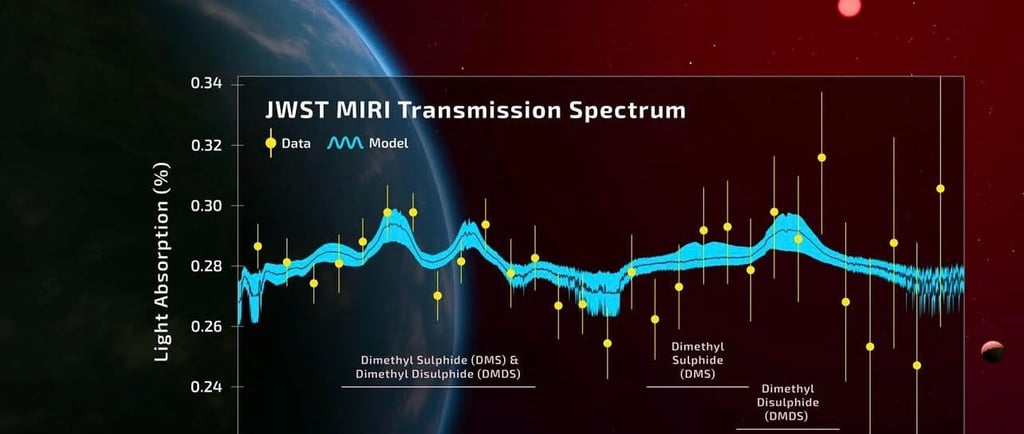Decoding the JWST MIRI Transmission Spectrum: Insights on Light Absorption and Wavelength Detection


Understanding the JWST MIRI Transmission Spectrum
The James Webb Space Telescope (JWST) has opened new avenues in astronomical exploration, especially through its Mid-Infrared Instrument (MIRI). The transmission spectrum from JWST MIRI significantly contributes to our understanding of light absorption in various compounds, crucial for identifying chemical signatures in celestial bodies.
Detecting Light Absorption Percentages
One of the key features of the JWST MIRI is its ability to analyze the light absorption percentages of different molecules. In particular, recent studies have focused on compounds like dimethyl sulphide (DMS) and dimethyl disulphide (DMDS). By measuring how much light is absorbed across various wavelengths, we can infer the presence of these compounds in extraterrestrial atmospheres. The significance of this data lies not only in understanding the atmospheric compositions but also in predicting potential biological activity on exoplanets.
Wavelength Detection in Microns
The wavelength detection capabilities of the JWST MIRI span various ranges measured in microns, enabling astronomers to observe a wide spectrum of light. This feature proves particularly beneficial when studying compounds like DMS and DMDS, as their absorption characteristics vary with wavelength. For example, the intricate models generated from JWST data allow scientists to visualize how different wavelengths correlate with the absorption traits of these compounds.
The availability of both data and advanced models has paved the way for enhanced understanding of light absorption behaviors. By analyzing the absorption spectrum, researchers can discern minute details about a molecule's interaction with light, further solidifying their significance in astrochemistry.
Ultimately, the application of these methodologies using the JWST MIRI transmission spectrum offers a powerful means of unraveling the mysteries of distant worlds. This not only fosters advancements in planetary science but also ignites interest in the possibility of finding life beyond our planet.
